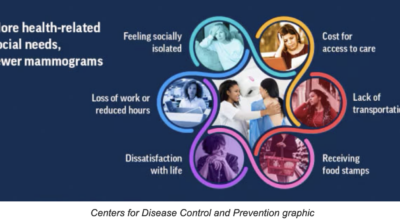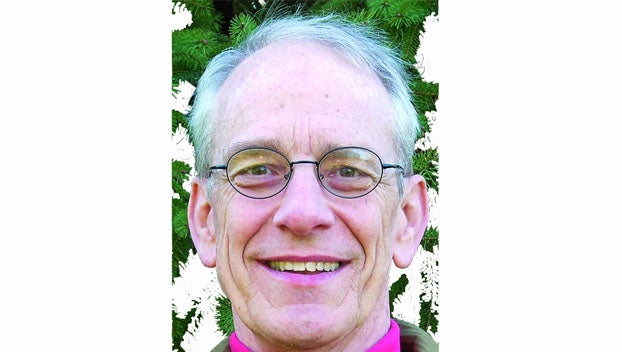Benefits, recources to help stop smoking
Published 10:45 am Monday, November 14, 2016
A
ccording to the World Health Organization, tobacco is the single greatest preventable cause of death in the world today. Cigarette smoking is responsible for more than 480,000 deaths per year in the United States, meaning about 1,300 deaths everyday are contributed to smoking.
Smoking cigarettes kills more Americans than alcohol, car accidents, HIV, guns, and illegal drugs combined according to the American Cancer Society. Smoking has the potential to cause cancer in nearly every part of the body including the bladder, blood, cervix, colon and rectum (colorectal), esophagus, kidney and ureter, larynx (voice box), liver, oropharynx (includes parts of the throat, tongue, soft palate, and the tonsils), pancreas, stomach, trachea, bronchus, and lungs. In addition to cancer, smokers are at greater risk of developing respiratory diseases, cardiovascular (heart) disease, reproduction issues, strokes, type 2 diabetes, dental problems, cataracts in the eyes, decreased bone density after menopause for women, and many other health issues.
Women who smoke may have added risks from using tobacco. Smoking can make it harder for a woman to become pregnant. Women smoking after becoming pregnant can affect a baby’s health before and after birth with increased risks for issues such as miscarriage, stillbirth, preterm birth, lifelong disability and Sudden Infant Death Syndrome (SIDS) Babies whose mothers smoke are about three times more likely to die from SIDS according to the Centers for Disease Control and Prevention.
Smoking can have negative health effects for families. Nonsmoking spouses and partners of smokers have a higher risk of lung cancer and heart disease compared with people who don’t live with smokers. This is primarily from secondhand smoke, smoke inhaled involuntarily from tobacco being smoked by others. Secondhand smoke contains hundreds of chemicals known to be toxic or carcinogenic. Secondhand smoke is especially harmful to young children.
While tobacco takes a toll on a smoker’s body, these negative health effects do not have to last a lifetime. When someone stops smoking, the body has the ability to slowly start to repair the damaged parts of our bodies. The health benefits of becoming a non-smoker are abundant.
After 20 minutes, blood pressure, pulse rate, and the temperature of your hands and feet have returned to normal.
After 24 hours, oxygen in the blood has increased to normal and the ability to smell and taste has enhanced.
After two weeks to three months, lung function is beginning to improve.
After 21 days, nicotine receptors in the brain have returned to levels seen in non-smokers, curbing your craving for nicotine.
After one year, excess risk of heart disease and stroke has decreased to less than half compared to a smoker.
After 10 years, the risk of death from lung cancer has declined by almost half and risk of developing diabetes for men and women is now similar to that of a never-smoker.
Quitting smoking before the age of 40 reduces the risk of dying from smoking-related disease by about 90 percent as reported by the CDC.
Initiatives have been at work to encourage people to quit using tobacco products in hopes of living longer, healthier lives.
One approach to promote tobacco free lives is the American Cancer Society Great American Smokeout event that is held every year on the third Thursday of November.
Since 1977, the Great American Smokeout has challenged people to stop smoking and seeks to educate the public about the tools available to help them quit and continue to not smoke. This annual event encourages people to use the date to make a plan to quit, or may plan in advance to quit smoking that day. Thursday is one day dedicated to giving up tobacco use, with the goal of gaining the title “non-smoker” for life. Even one day of quitting is an important step towards a healthier life.
Communities all over America have local volunteers and health organizations that use this event to publicize the need to quit tobacco use, press for laws that control tobacco use, encourage youth to never begin smoking, and support people who want to quit.
The Clark County Health Department has organized many activities in the community for the Great American Smokeout. Cub Scout Pack 56, led by Kimberlee Gamble, picked up cigarette butts Oct. 30 at College Park to make our park a more healthy and beautiful green space for our community. Tobacco prevention was taught at Willis H. Justice Elementary School for second grade classes on Nov. 9 featuring Suzie Smokerand Sooper Puppy. Students at Phoenix Academy designed tobacco prevention posters to be displayed in store windows downtown.
Future Great American Smokeout activities include:
— “Quit Kit” Exchange during the Campbell basketball game, 5:30-8:30 p.m. Monday.
— Tobacco prevention class, Strode Station Elementary, 8:30 a.m. to 1:30 p.m. Wednesday.
— Health fair, Kroger, 10 a.m. to 7 p.m. Thursday.
In addition to these events, many schools in Clark County have recently voted to become tobacco free. Signage provided by the Clark County Health Department has recently been distributed to many schools in the district that have voted to become smoke free including Willis H. Justice Elementary, Strode Station Elementary, Robert D. Campbell Jr. High, and George Rogers Clark High School.
Contact the Clark County Health Department at 744-4482 for more information on Freedom From Smoking classes.
By quitting, even for one day, you will be taking an important step toward a healthier life — one that can lead to reducing your cancer risk. It’s a race for your health, and it starts today. Today’s the day that quitters win. Take charge of your health on November 17th and quit smoking!
Visit the Clark County Health Department website at www.clarkhealthdept.org,. find us on Facebook or follow us on Twitter @CCHealthDept.





